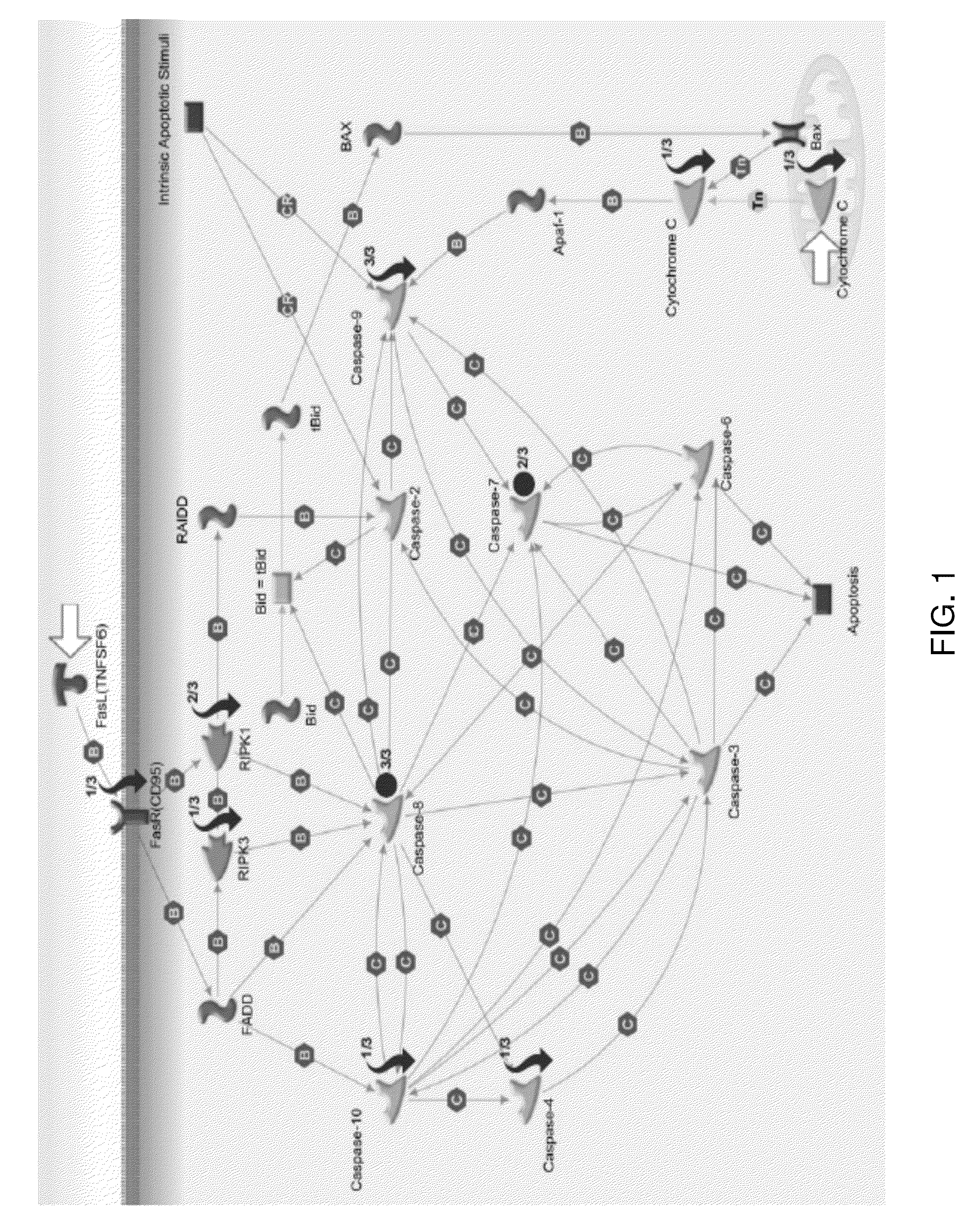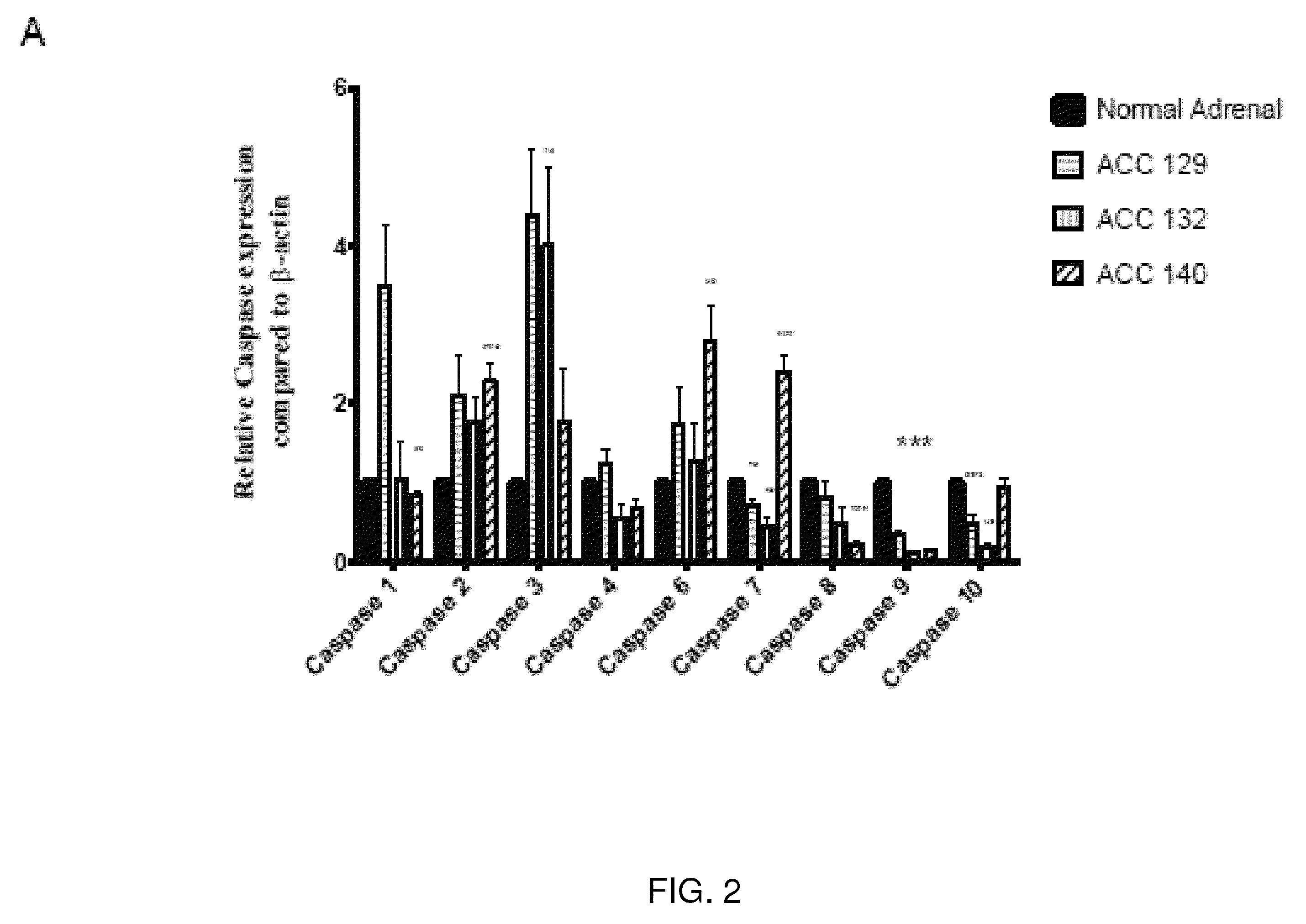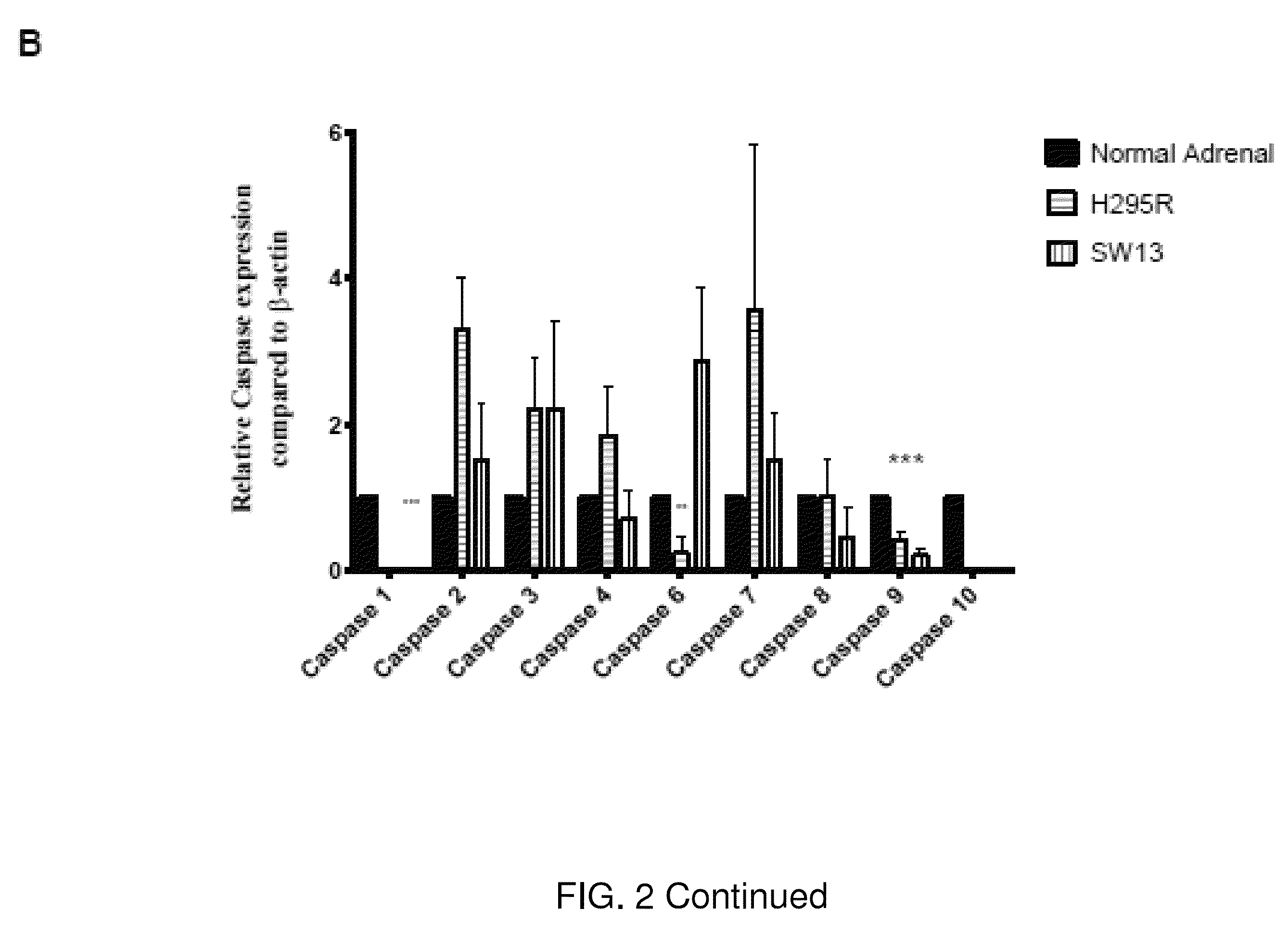Methods for the treatment of cancer
a cancer and cancer technology, applied in the field of cancer treatment, can solve the problems of unmet medical needs and unparalleled opportunities, less than 40,000 cases diagnosed per year in the u.s., and achieve the effects of reducing the number of cancer cases, improving the survival rate, and improving the survival ra
- Summary
- Abstract
- Description
- Claims
- Application Information
AI Technical Summary
Benefits of technology
Problems solved by technology
Method used
Image
Examples
example 1
[0164]Patient clinical information is listed in Table 1. These tumors were characterized by the presence of shared genomic alterations as well as tumor specific events that converged on common pathways.
[0165]
TABLE 1Clinical Description of ACC Patient and Tumor CharacteristicsTumorAgeSurvivalTumorTumorWeissHormoneSample*(years)(years)StageGradeScoreStatusACC 129550.583244cortisol,DHEASACC 132516Recur-2NAnon-rencefunctionalACC 140632.08444non-functional
example 2
Differential Caspase Expression in ACC Samples
[0166]Differential gene expression was evaluated relative to a pool of 4 normal adrenals through pathway enrichment in GeneGo and analyzed the involvement of pathways involved in ACC pathogenesis, including p53 responses and IGF2 signaling. GeneGo analysis identified commonly affected pathways, including loss of caspase 9 (CASP9) expression.
[0167]In ACC 129, IGF2 signaling appeared to be directed towards suppression of apoptosis through 14-3-3. In ACC 132 and ACC 140, signaling was repressed, and instead, ACC 132 and ACC 140 have evidence of MET amplification and signaling. All tumors also under-expressed beta-catenin. p53 transcriptional response was disrupted in all tumors, with the two wild-type p53 tumors (ACC 129 and ACC132) over-expressing MDM2.
[0168]Because sporadic adult ACC is usually wild-type for p53 yet highly resistant to chemotherapy, cell death response pathways were studied, including the caspase cascade, which is central...
example 3
Confirmation of Differential Caspase Expression Via Quantitative RT-PCR
[0169]As shown in FIG. 2, the expression of multiple caspases was altered, with CASP9 being significantly under-expressed in all three tumors and in the ACC cell lines H295R and SW-13. The primary tumors (panel A) and the cell lines, H295R, and SW-13 (panel B), show increased expression of caspase 2, with over-expression being statistically significant in ACC140 and H295R. Additionally, two of the tumors over-express one or more of the effector caspases.
PUM
| Property | Measurement | Unit |
|---|---|---|
| temperature | aaaaa | aaaaa |
| volume | aaaaa | aaaaa |
| volume | aaaaa | aaaaa |
Abstract
Description
Claims
Application Information
 Login to View More
Login to View More - R&D
- Intellectual Property
- Life Sciences
- Materials
- Tech Scout
- Unparalleled Data Quality
- Higher Quality Content
- 60% Fewer Hallucinations
Browse by: Latest US Patents, China's latest patents, Technical Efficacy Thesaurus, Application Domain, Technology Topic, Popular Technical Reports.
© 2025 PatSnap. All rights reserved.Legal|Privacy policy|Modern Slavery Act Transparency Statement|Sitemap|About US| Contact US: help@patsnap.com



